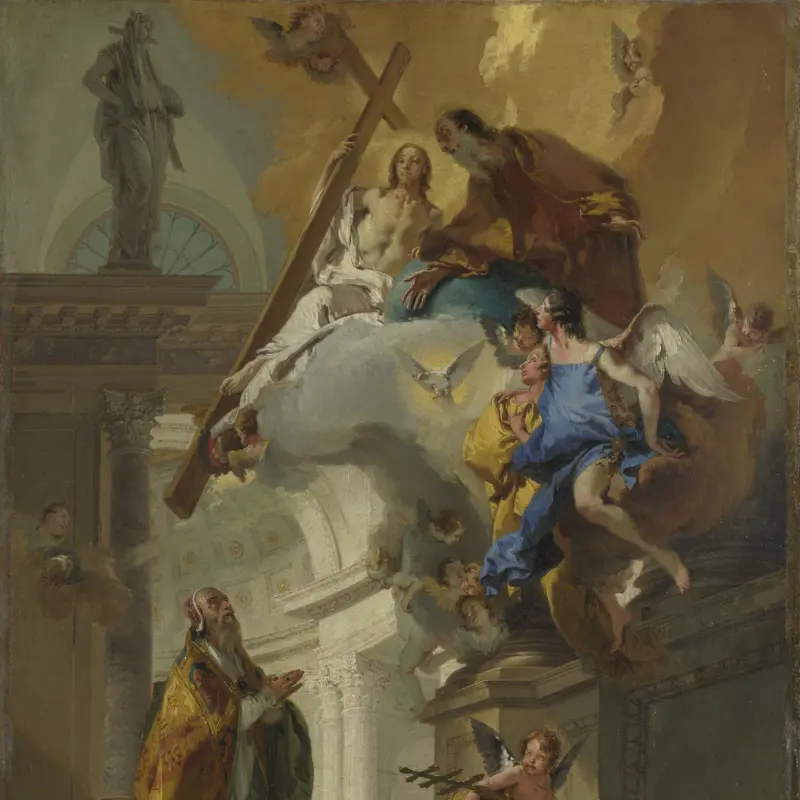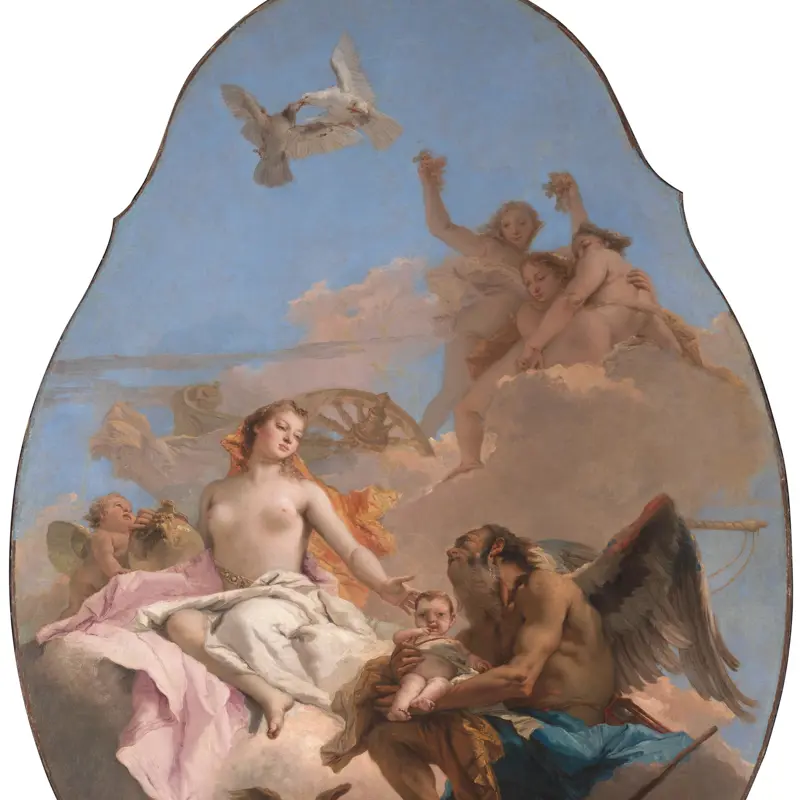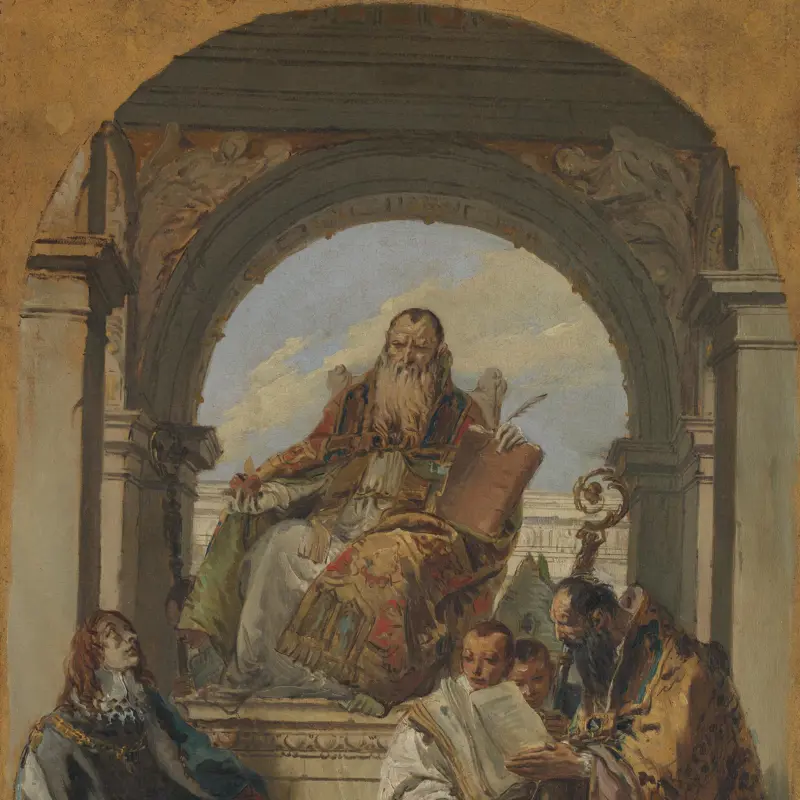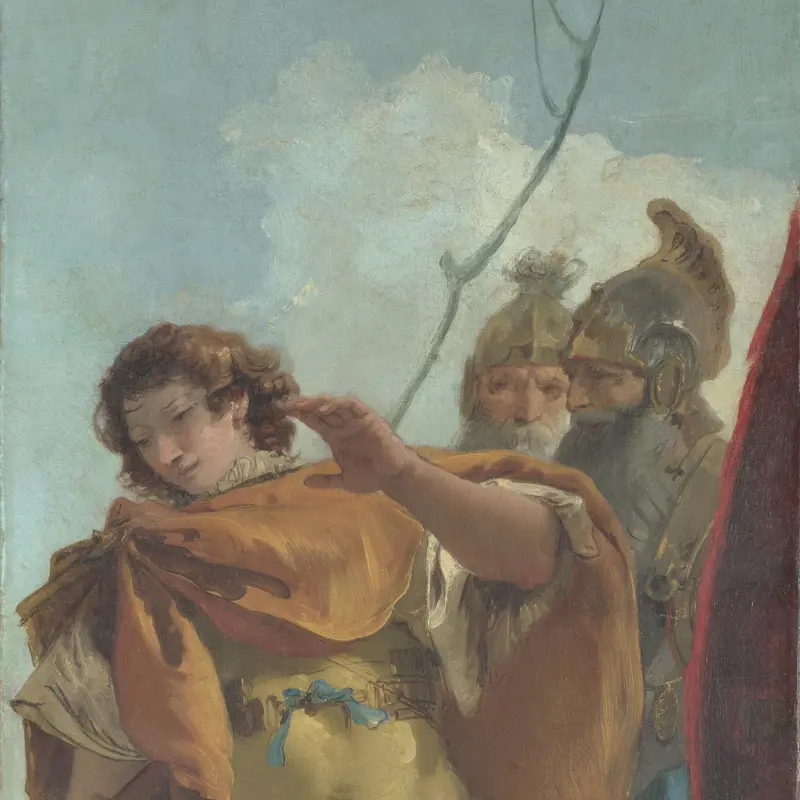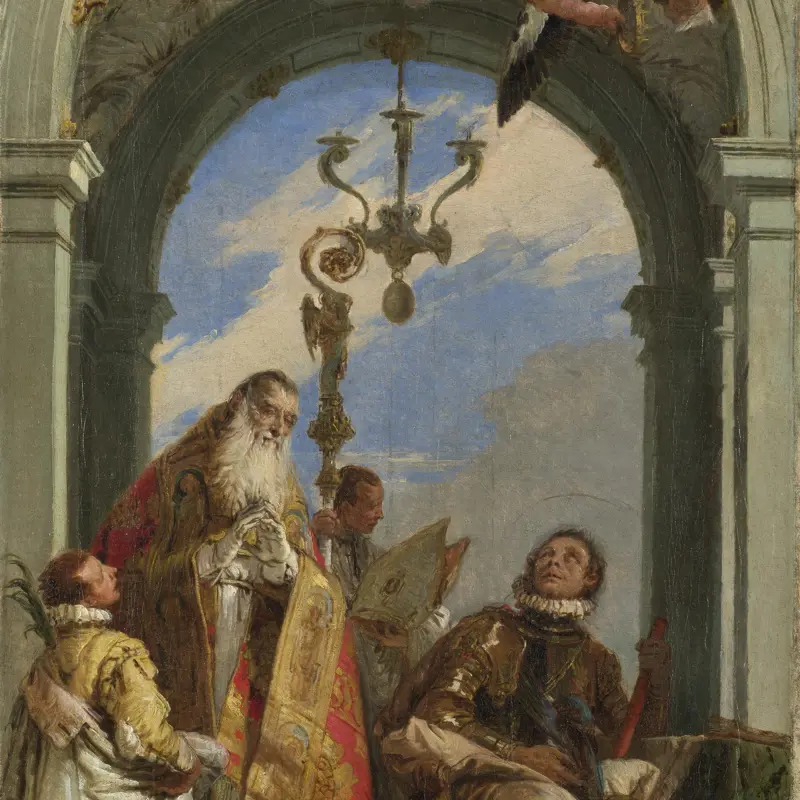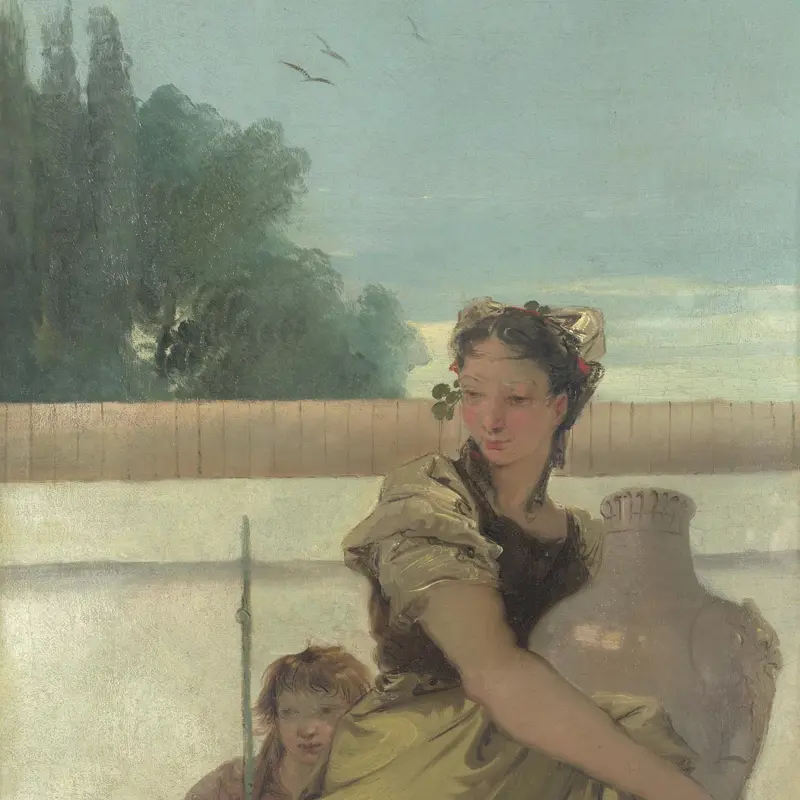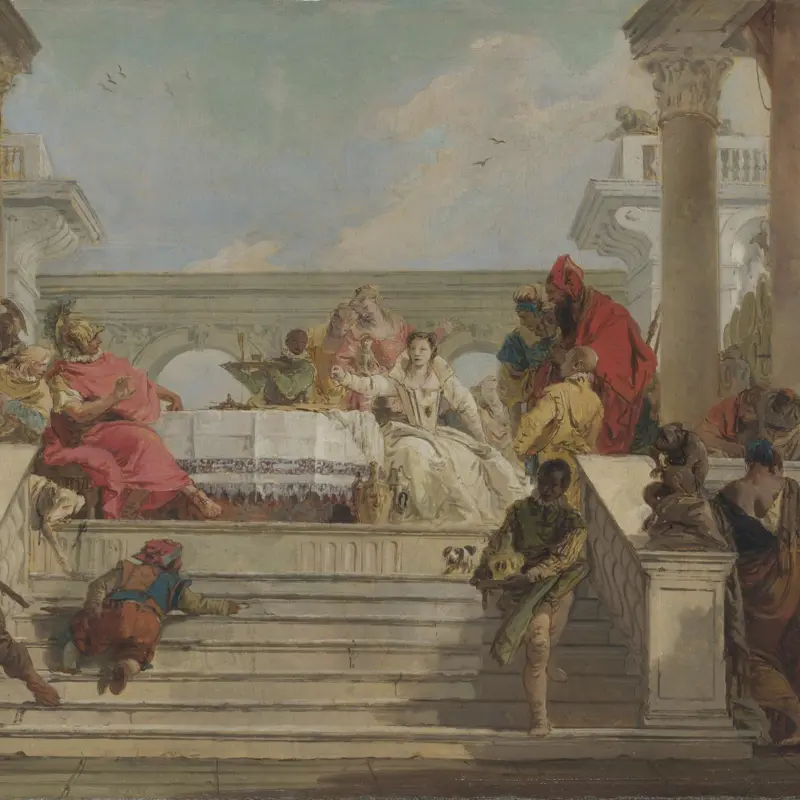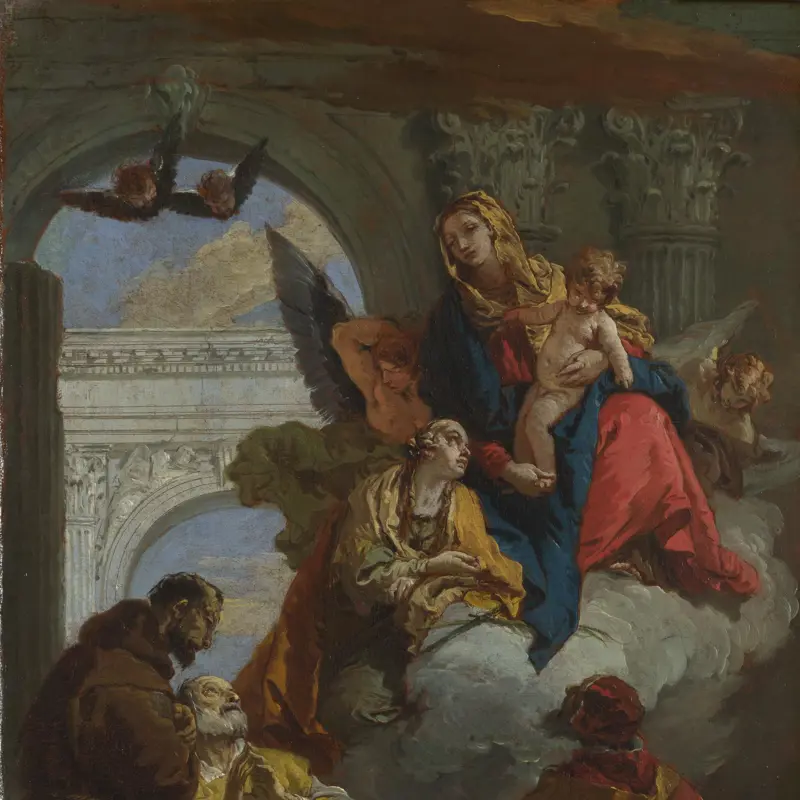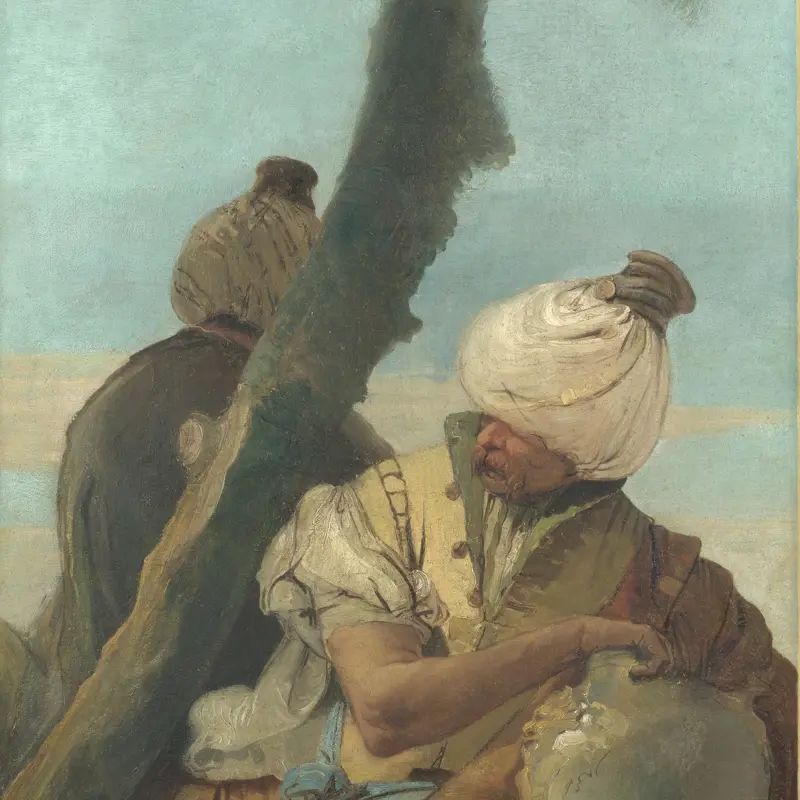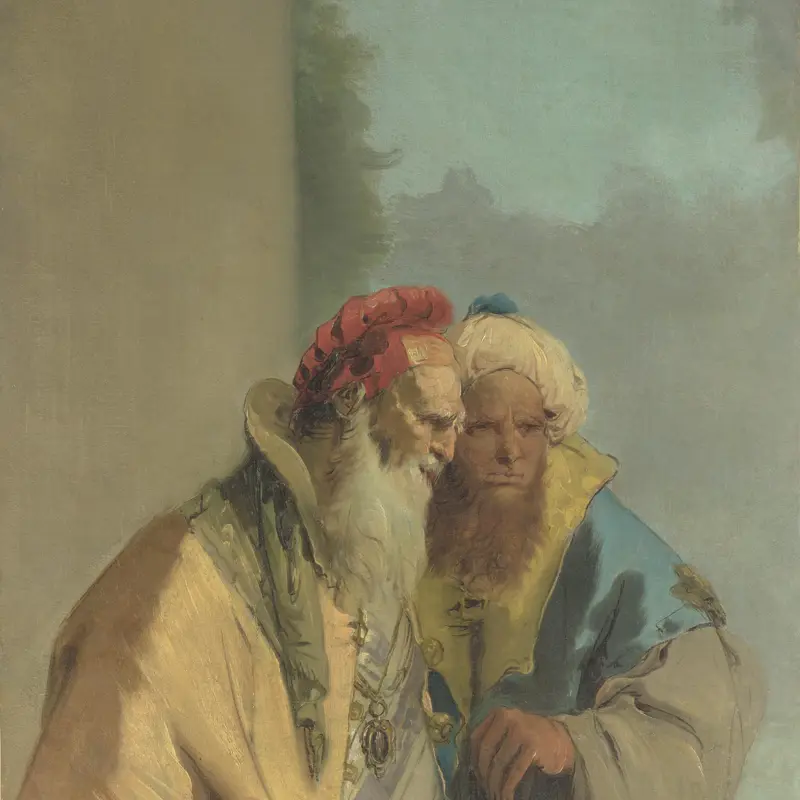Giovanni Battista Tiepolo, a Venetian, was the greatest Italian Rococo painter, although his style was founded on the Grand Manner of the High Renaissance. His imaginative decorative frescoes are light in colour and airy in feel; the National Gallery's 'Allegory with Venus and Time' was part of a ceiling decoration and is similarly light and airy. He also executed many altarpieces; several small works in the Collection are modelli for frescoes or altarpieces.
Tiepolo was born in Venice and was trained there by Gregorio Lazzarini. He was influenced by his near contemporaries, Piazzetta and Ricci, but is indebted above all to his predecessor Veronese. In 1719 he married the sister of Francesco Guardi, and in his early years worked in Udine (1726), Milan (1731-40) and Bergamo (1741-2), as well as Venice. He moved in 1750 with his sons, Domenico (a considerable artist in his own right) and Lorenzo, to Würzburg to decorate the residence of the Prince-Bishop, and returned to Venice in 1753. In 1755 he was elected Director of the Accademia, Venice.
His later works, quieter and less exuberant in character, were carried out in Spain, where he moved with his sons in 1762 to work for the Spanish monarchy, and where he died.
Giovanni Battista Tiepolo
1696 - 1770
Works by Giovanni Battista Tiepolo
(Showing 6 of 10 works)
This highly finished oil sketch relates to an altarpiece that Giovanni Battista Tiepolo painted for the chapel at the palace of Nymphenburg, outside Munich, in around 1735 (now in the Alte Pinakothek, Munich). Saint Clement kneels in the foreground, a vision of the Trinity above him. God the Fath...
Not on display
This huge oval-shaped painting, which is about 3 metres long, was commissioned to decorate a ceiling in a palazzo belonging to the Contarini family. The scale of the figures and the sense that they are above us hint at the intended destination: this work was made to be seen from below, and at a g...
This oil sketch shows the design for an altarpiece that Giovanni Battista Tiepolo made for the church of San Salvatore in Venice in 1737. The scene unites saints from different periods and places. Seated on the throne and holding a flaming heart to symbolise his love for God is Saint Augustine (3...
Not on display
This painting shows Rinaldo, a Christian knight who has been enchanted by the Saracen sorceress Armida. He turns away from his own reflection in a magic shield that has been given to him by one of his companions to break the spell. Rinaldo later gives up his love for Armida and escapes.The scene...
Not on display
This small picture is based on an altarpiece Tiepolo made in about 1742 for a church in Padua. The altarpiece, which is still in situ, is dedicated to Saints Maximus and Oswald, though only the figure of Saint Maximus is the same in both.Saint Maximus, the second bishop of Padua, is shown here dr...
Not on display
Within a walled garden, a man wearing a striking blue costume and ornate necklace catches the gaze of a woman holding a jar. A young boy stands just behind her, carrying a spear. Beyond the wall we glimpse treetops and birds flying across a bright sky.This picture is part of a series of four pain...
Not on display
Sat at a grand table, Cleopatra, ruler of Egypt, is about to dissolve one of her priceless pearls in a goblet of vinegar, showing her contempt for wealth to the Roman general Mark Antony, who, dressed in red, recoils in surprise. The moment is described by the Roman historian Pliny in his Natural...
This is a small oil sketch but its composition is ambitious. Tiepolo has arranged the figures in a towering pyramid with the Virgin Mary at the top, seated on a cloud. She holds the Christ Child on her knee, grasping his foot firmly as he tugs at her veil.The saints’ responses unfold in a chain r...
Not on display
Two men in turbans are seated under a tree that provides little shade. One has his back to us; the other, who wears his clothing in elaborate layers, has a bushy moustache that gives him extra character. He rests his right arm on a jar and looks across the scene, though his eyes are hidden by his...
Not on display
Two men, wearing robes and headdresses of luxurious fabrics, stand huddled together. Giovanni Battista Tiepolo’s lively outlines and visible brushstrokes emphasise the long, showy sleeves and folds of their clothing. Hints of primary colours appear against more sombre tones, while the brilliant s...
Not on display
You've viewed 6 of 10 works

